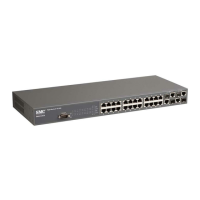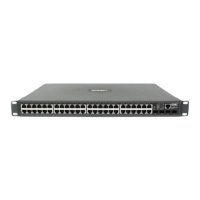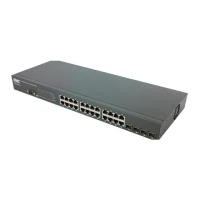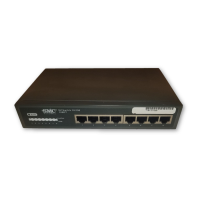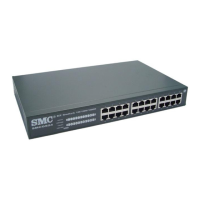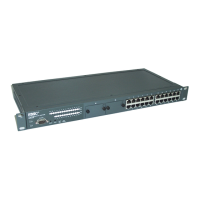U
SER
A
UTHENTICATION
3-79
3. Import Client’s Public Key to the Switch – Use the copy tftp public-key
command (
page 4-88) to copy a file containing the public key for all the
SSH client’s granted management access to the switch. (Note that these
clients must be configured locally on the switch via the User Accounts
page as described on
page 3-66.) The clients are subsequently
authenticated using these keys. The current firmware only accepts
public key files based on standard UNIX format as shown in the
following example for an RSA Version 1 key:
1024 35 1341081685609893921040944920155425347631641921872958921143173880
05553616163105177594083868631109291232226828519254374603100937187721199696317
81366277414168985132049117204830339254324101637997592371449011938006090253948
40848271781943722884025331159521348610229029789827213532671316294325328189150
45306393916643 steve@192.168.1.19
4. Set the Optional Parameters – On the SSH Settings page, configure the
optional parameters, including the authentication timeout, the number
of retries, and the server key size.
5. Enable SSH Service – On the SSH Settings page, enable the SSH server
on the switch.
6. Challenge-Response Authentication – When an SSH client attempts to
contact the switch, the SSH server uses the host key pair to negotiate a
session key and encryption method. Only clients that have a private key
corresponding to the public keys stored on the switch can access. The
following exchanges take place during this process:
a.The client sends its public key to the switch.
b. The switch compares the client's public key to those stored in memory.
c. If a match is found, the switch uses the public key to encrypt a random
sequence of bytes, and sends this string to the client.
d. The client uses its private key to decrypt the bytes, and sends the
decrypted bytes back to the switch.
e. The switch compares the decrypted bytes to the original bytes it sent. If
the two sets match, this means that the client's private key corresponds
to an authorized public key, and the client is authenticated.
Notes: 1. To use SSH with only password authentication, the host public
key must still be given to the client, either during initial
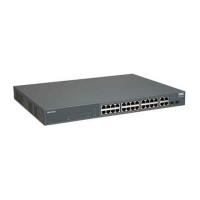
